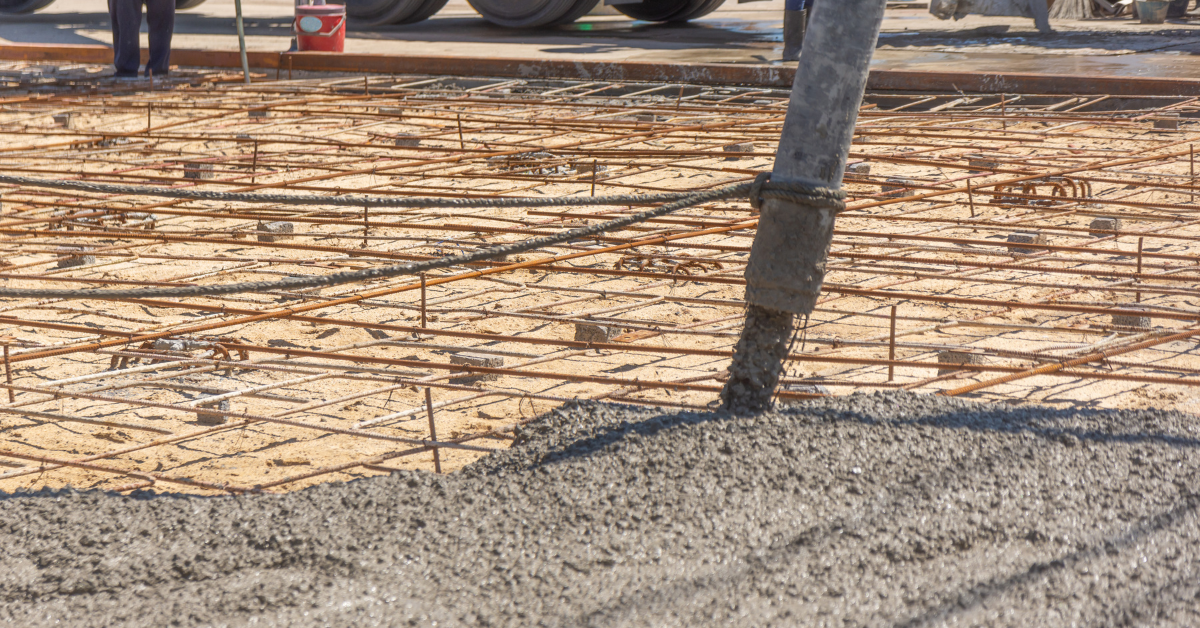Concrete pumping has revolutionised the construction industry, making it possible to place concrete precisely and efficiently in locations that would otherwise be difficult or impossible to reach. Whether you’re working on a high-rise building, a residential extension, or a large commercial development, understanding concrete pumping can help you make informed decisions about your project.
What Is Concrete Pumping?
Concrete pumping is a method of transferring liquid concrete through pipework or hoses to the exact location where it’s needed. Instead of relying on wheelbarrows, cranes, or conveyors, a concrete pump pushes the material directly to the pour site, saving time and labour whilst ensuring consistent quality.
This technique is particularly valuable when access is restricted, when concrete needs to be placed at height, or when large volumes need to be poured quickly and efficiently. From foundations to roofs, concrete pumping offers a versatile solution for projects of all scales.
Types of Concrete Pumps
Boom Pumps
Boom pumps, also known as truck-mounted pumps, feature a remote-controlled robotic arm that can extend and manoeuvre to place concrete with precision. These pumps are mounted on lorries and are ideal for larger projects where concrete needs to be placed at significant heights or over obstacles.
The boom can typically reach between 20 and 70 metres, depending on the model, making them perfect for multi-storey buildings, bridge construction, and large-scale commercial developments. The remote control allows operators to position concrete accurately from a safe distance, improving both efficiency and safety on site.
Line Pumps
Line pumps, sometimes called trailer-mounted or static pumps, are smaller, more portable units that push concrete through flexible hoses along the ground. These are excellent for smaller projects, residential work, or situations where space is limited.
Line pumps are particularly useful for ground-level pours, swimming pools, footings, and domestic extensions. They’re more economical than boom pumps and can navigate through tight access points, making them a popular choice for restricted sites.
Key Benefits of Concrete Pumping
Speed and Efficiency
Concrete pumping dramatically reduces the time needed to complete a pour. What might take a full day using traditional methods can often be accomplished in just a few hours with the right pump. This efficiency means less disruption, lower labour costs, and faster project completion.
Improved Accuracy
The precision offered by concrete pumping ensures that concrete is placed exactly where it’s needed, reducing waste and minimising the need for redistribution. This accuracy is especially important for complex architectural features or when working to tight tolerances.
Enhanced Safety
By reducing the need for manual handling and allowing concrete to be placed from a distance, pumping significantly improves site safety. There’s less risk of injury from lifting and carrying, and fewer workers need to be in potentially hazardous areas during the pour.
Access to Difficult Areas
Whether you’re working on a sloping site, dealing with limited access, or need to reach over existing structures, concrete pumps can place material where other methods simply can’t. This versatility opens up possibilities for projects that might otherwise be impractical.
Reduced Labour Requirements
Fewer workers are needed on site during the pour, which translates to lower labour costs and less congestion in working areas. This is particularly beneficial for sites with limited space or where multiple trades need to work simultaneously.
When Should You Use Concrete Pumping?
Concrete pumping is worth considering in several scenarios:
- High-rise construction: When concrete needs to be placed several storeys up
- Restricted access sites: Where machinery and vehicles cannot easily reach the pour location
- Large volume pours: When speed and continuous flow are essential
- Sloping sites: Where traditional methods would be impractical or dangerous
- Over obstacles: When concrete needs to be placed over walls, buildings, or other structures
- Tight schedules: When project timelines demand rapid concrete placement
Choosing the Right Pump for Your Project
Selecting the appropriate pump depends on several factors:
Project scale influences whether a boom or line pump is more suitable. Larger commercial projects typically benefit from boom pumps, whilst residential work often suits line pumps perfectly.
Access constraints play a crucial role. If the site has narrow pathways or limited entry points, a compact line pump may be the only viable option.
Pour location determines the reach required. Ground-level pours suit line pumps, whilst elevated pours need the extended reach of a boom pump.
Volume and duration affect pump selection. Continuous large-volume pours demand the capacity and speed of larger pump units.
Working with Concrete Pumping Specialists
Professional concrete pumping requires expertise and proper equipment. When planning your project, it’s essential to work with experienced suppliers who can assess your specific requirements and recommend the most appropriate solution.
At National Mini Mix, we understand that every construction project has unique demands. Our team can help you determine whether concrete pumping is right for your job and ensure that you have the correct equipment and support for successful concrete placement.
Preparing for a Concrete Pump
To ensure a smooth pumping operation:
- Provide clear access for the pump and associated vehicles
- Ensure stable ground for the pump to operate safely
- Communicate pour locations clearly with your supplier
- Have sufficient manpower on site to handle and finish the concrete
- Check overhead clearances if using a boom pump
- Confirm timing to avoid delays in concrete delivery and placement
Conclusion
Concrete pumping has become an indispensable tool in modern construction, offering unmatched efficiency, precision, and versatility. Understanding when and how to use this technology can make a significant difference to your project’s success, saving time and money whilst improving quality and safety.
Whether you’re planning a modest residential extension or a major commercial development, considering concrete pumping as part of your construction strategy could be the key to a smoother, more efficient build. With the right equipment, experienced operators, and quality concrete, pumping provides a reliable solution for even the most challenging concrete placement tasks.



